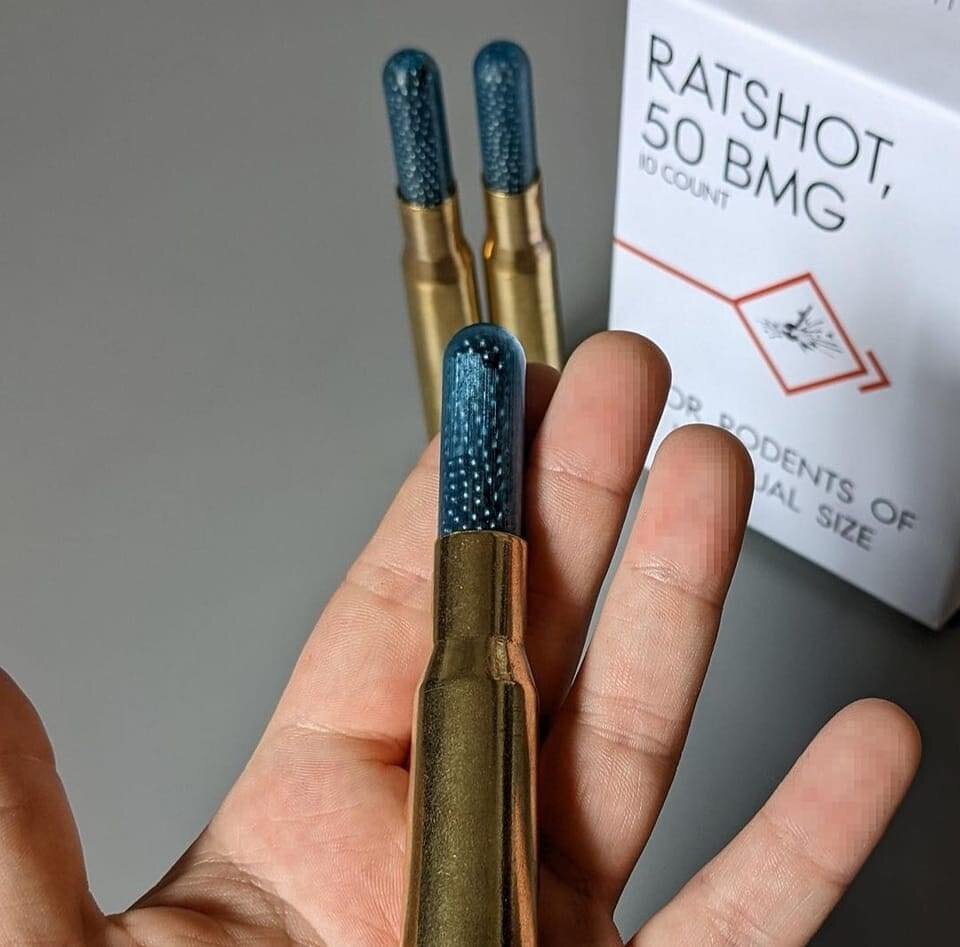You are using an out of date browser. It may not display this or other websites correctly.
You should upgrade or use an alternative browser.
You should upgrade or use an alternative browser.
Unofficial Military (and other cool) Stuff Thread
nivek
As Above So Below
Dejan Corovic
As above, so bellow
A little bit of WW2 history:
An interview with Rudolph Hess' daughter who now lives in Virginia, US:
View: https://youtu.be/GlNhXiQ1ueQ
An interview with Rudolph Hess' daughter who now lives in Virginia, US:
View: https://youtu.be/GlNhXiQ1ueQ
Todd Feinman
Show us the satellite pics...
Ah, Nazis.. Endlessly fascinating.
Todd Feinman
Show us the satellite pics...
Jousting gone wrong (Gregor Baci):
https://th.bing.com/th/id/OIP.KZpClvF40oXl8fc2TGCJ_gHaFs?dpr=1.3&pid=ImgDetMain
https://th.bing.com/th/id/OIP.KZpClvF40oXl8fc2TGCJ_gHaFs?dpr=1.3&pid=ImgDetMain
pigfarmer
tall, thin, irritable
A little bit of WW2 history:
An interview with Rudolph Hess' daughter who now lives in Virginia, US:
View: https://youtu.be/GlNhXiQ1ueQ
Hoss.
Hess was somebody else. "The Brown Mouse" Remember he flew to the UK, landed in Scotland and was locked up the rest of his life.
Rudolf Hess - Wikipedia
pigfarmer
tall, thin, irritable
I love that stuff ! A trip to London is on my bucket list.
I've seen this and it's damned interesting: The Met Arms & Armor
If you really want to geek out have a look: FINE HISTORICAL ARMS
Todd Feinman
Show us the satellite pics...
Great site! Thanks.
pigfarmer
tall, thin, irritable
Battleship New Jersey Leaves Her Pier For First Time In Over 30 Years
BYOLIVER PARKEN|PUBLISHED MAR 21, 2024 7:37 PM EDT
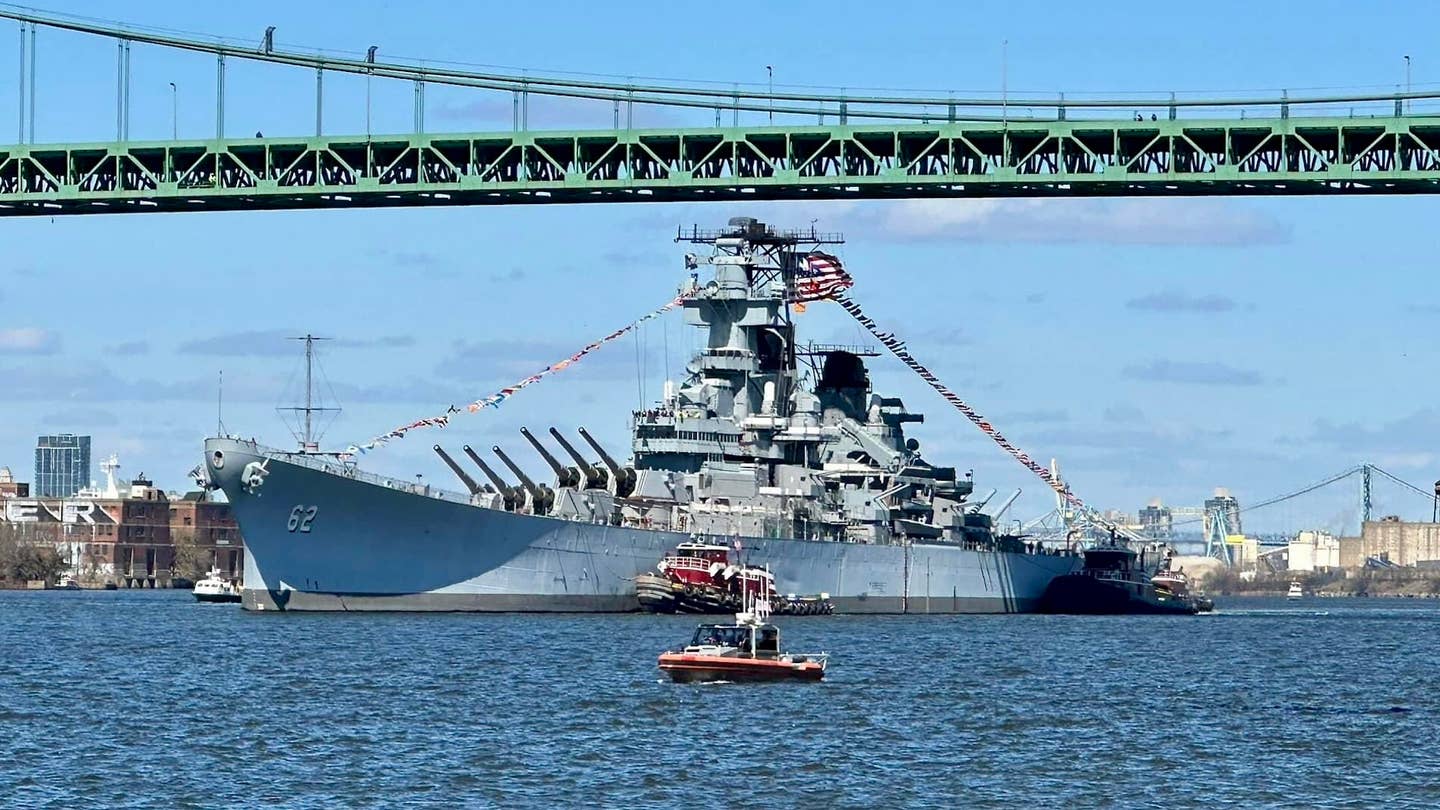
The decommissioned Iowa class battleship USS New Jersey (BB-62), the most decorated battleship in U.S. naval history and the second-built of four of her kind, left its dock for the first time in over 30 years earlier today for an extensive maintenance overhaul.
Imagery and videos of the historic warship — which has been permanently berthed as a museum ship at a ceremonial pier on the Camden waterfront in New Jersey since 2001 — have proliferated online this afternoon. These show it on its short journey down the Delaware River to the former Philadelphia Navy Yard, where essential maintenance work on the ship will take place.
A short departure ceremony was held for New Jersey on the Camden waterfront at 11.00 A.M. ET, attended by U.S. Navy personnel, veterans, and members of the public, as well as Phil Murphy (D), Governor of New Jersey, and Congressman Donald Norcross (D), South Jersey.
"There's no battleship in our history that comes close to the legacy [of New Jersey]," Murphy said at the ceremony.
From there, pulled by tugboats, it headed south under the Walt Whitman Bridge, seen in this article's feature image, before docking at the Paulsboro Marine Terminal in the afternoon. There, according to WPVI-TV in Philadelphia, it will be balanced for dry docking, before heading to the Naval Yard's dry dock number three in six days time.
That the dock maintenance will occur at this particular dry dock represents something of a homecoming for New Jersey; as it was there that the battleship was built during the late-1930s to early-1940s and launched on December 7, 1942, the first anniversary of Pearl Harbor. When the contract was awarded for the battleship in July 1939, Charles Edison, acting secretary of the Navy, chose to name the Philadelphia-built ship after his home state of New Jersey.
Overall, the maintenance is "vital for the Battleship’s longevity," New Jersey's museum website notes. The work is expected to take around two months in all to complete, which includes repainting the hull of the ship, mending its anti-corrosion system, and various inspections.
According to the battleship's curator, Ryan Szimanski, moving New Jersey might well be a "once in a generation occurrence" due to its age, WPVI-TV reported. Szimanski further told the outlet that the battleship represents "one of the most impressive man-made objects ever," displacing some 57,500 tons.

Iowa class USS New Jersey firing its nine 16-inch guns simultaneously during a demonstration in 1984. USN
Battleship New Jersey Leaves Her Pier For First Time In Over 30 Years
The move from the Camden waterfront to the Philadelphia Navy Yard is essential to begin critical renovations on the historic vessel.BYOLIVER PARKEN|PUBLISHED MAR 21, 2024 7:37 PM EDT

The decommissioned Iowa class battleship USS New Jersey (BB-62), the most decorated battleship in U.S. naval history and the second-built of four of her kind, left its dock for the first time in over 30 years earlier today for an extensive maintenance overhaul.
Imagery and videos of the historic warship — which has been permanently berthed as a museum ship at a ceremonial pier on the Camden waterfront in New Jersey since 2001 — have proliferated online this afternoon. These show it on its short journey down the Delaware River to the former Philadelphia Navy Yard, where essential maintenance work on the ship will take place.
A short departure ceremony was held for New Jersey on the Camden waterfront at 11.00 A.M. ET, attended by U.S. Navy personnel, veterans, and members of the public, as well as Phil Murphy (D), Governor of New Jersey, and Congressman Donald Norcross (D), South Jersey.
"There's no battleship in our history that comes close to the legacy [of New Jersey]," Murphy said at the ceremony.
From there, pulled by tugboats, it headed south under the Walt Whitman Bridge, seen in this article's feature image, before docking at the Paulsboro Marine Terminal in the afternoon. There, according to WPVI-TV in Philadelphia, it will be balanced for dry docking, before heading to the Naval Yard's dry dock number three in six days time.
That the dock maintenance will occur at this particular dry dock represents something of a homecoming for New Jersey; as it was there that the battleship was built during the late-1930s to early-1940s and launched on December 7, 1942, the first anniversary of Pearl Harbor. When the contract was awarded for the battleship in July 1939, Charles Edison, acting secretary of the Navy, chose to name the Philadelphia-built ship after his home state of New Jersey.
Overall, the maintenance is "vital for the Battleship’s longevity," New Jersey's museum website notes. The work is expected to take around two months in all to complete, which includes repainting the hull of the ship, mending its anti-corrosion system, and various inspections.
According to the battleship's curator, Ryan Szimanski, moving New Jersey might well be a "once in a generation occurrence" due to its age, WPVI-TV reported. Szimanski further told the outlet that the battleship represents "one of the most impressive man-made objects ever," displacing some 57,500 tons.

Iowa class USS New Jersey firing its nine 16-inch guns simultaneously during a demonstration in 1984. USN
J Randall Murphy
Trying To Stay Awake
Note there that the Ukrainian coat of arms, a trident, is an official symbol of the country that dates back over a thousand years. It is NOT a symbol of NAZI affiliation.
Dejan Corovic
As above, so bellow
US Navy ships have one logistic weakness, after just one fight they need minimum one month to just reload empty magazine and come back.
View: https://youtu.be/yjIe4haGfAg
View: https://youtu.be/yjIe4haGfAg
pigfarmer
tall, thin, irritable
US Navy ships have one logistic weakness, after just one fight they need minimum one month to just reload empty magazine and come back.
View: https://youtu.be/yjIe4haGfAg
Navy Wants A Cheap Heavy Torpedo That Can Be Stockpiled Fast
Dejan Corovic
As above, so bellow
pigfarmer
tall, thin, irritable
Check Out This Marine CH-53K Carrying An F-35C While Refueling From A KC-130T
BYJOSEPH TREVITHICK|PUBLISHED APR 25, 2024 9:36 PM EDT
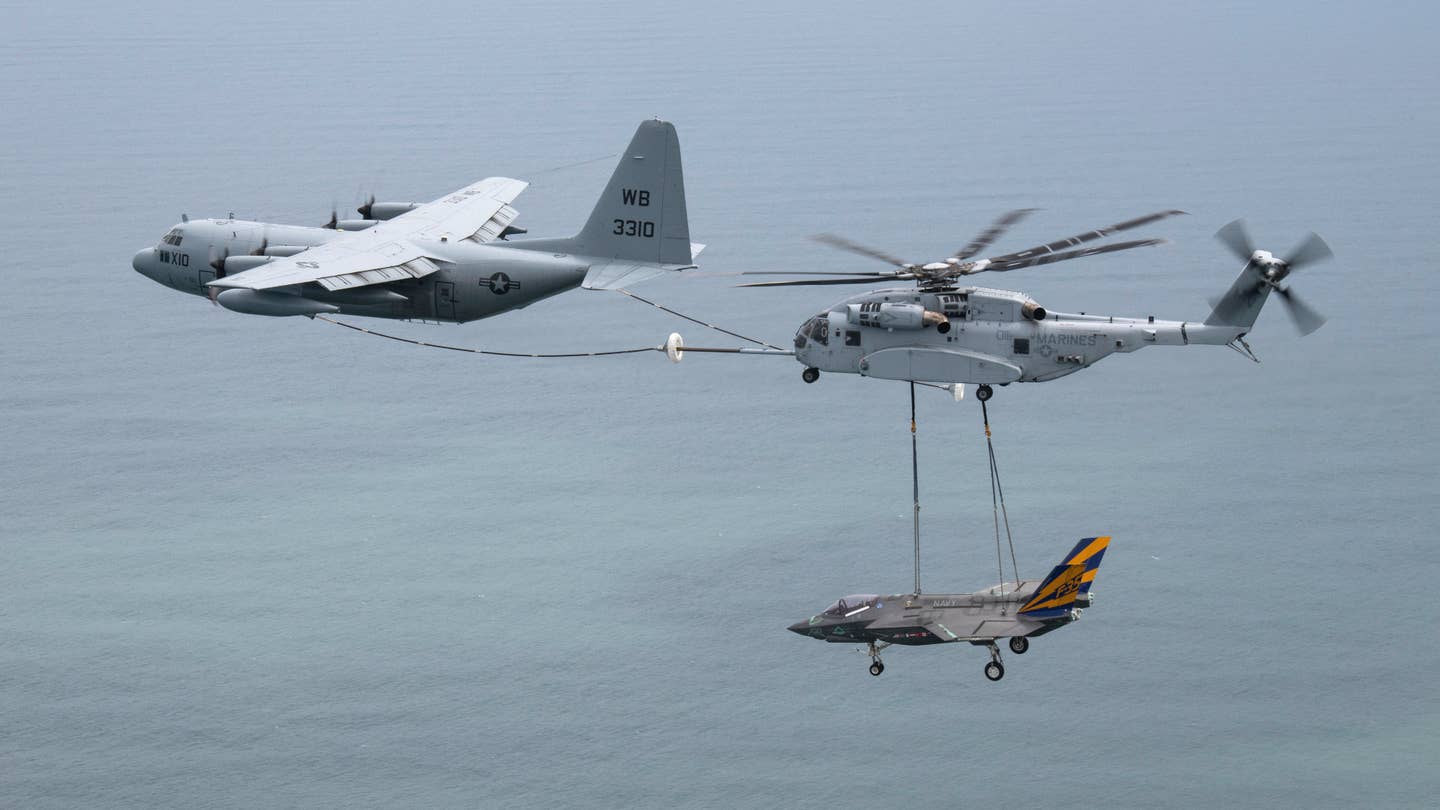
U.S. Marine Corps CH-53K King Stallion helicopter with a stripped-down hulk of an F-35C slung underneath refueling in mid-air from a KC-130T Hercules tanker/transport aircraft is a window into what the service's distributed aviation operations might look like in the future.
A Marine CH-53K with a pilot from Marine Test and Evaluation Squadron 1 (VMX-1) at the controls recently did all of this while helping move the remains of the first F-35C test jet, also known as CF-1, from one base to another on April 24. The King Stallion carried the "inoperable airframe, which was without mission and propulsion systems, outer wings, or additional equipment" from Naval Air Station Patuxent River in Maryland to Naval Air Warfare Center Aircraft Division (NAWCAD) Lakehurst some 160 miles to the northeast, according to a caption accompanying the picture seen at the top of this story, which was released yesterday. NAWCAD Lakehurst is situated within Joint Base McGuire-Dix-Lakehurst. What's left of CF-1 will be used for "future emergency recovery systems testing" at its new home in New Jersey, the Navy says.
Additional pictures the Navy has released showing the movement of CF-1 from Patuxent River to Lakehurst are seen below.
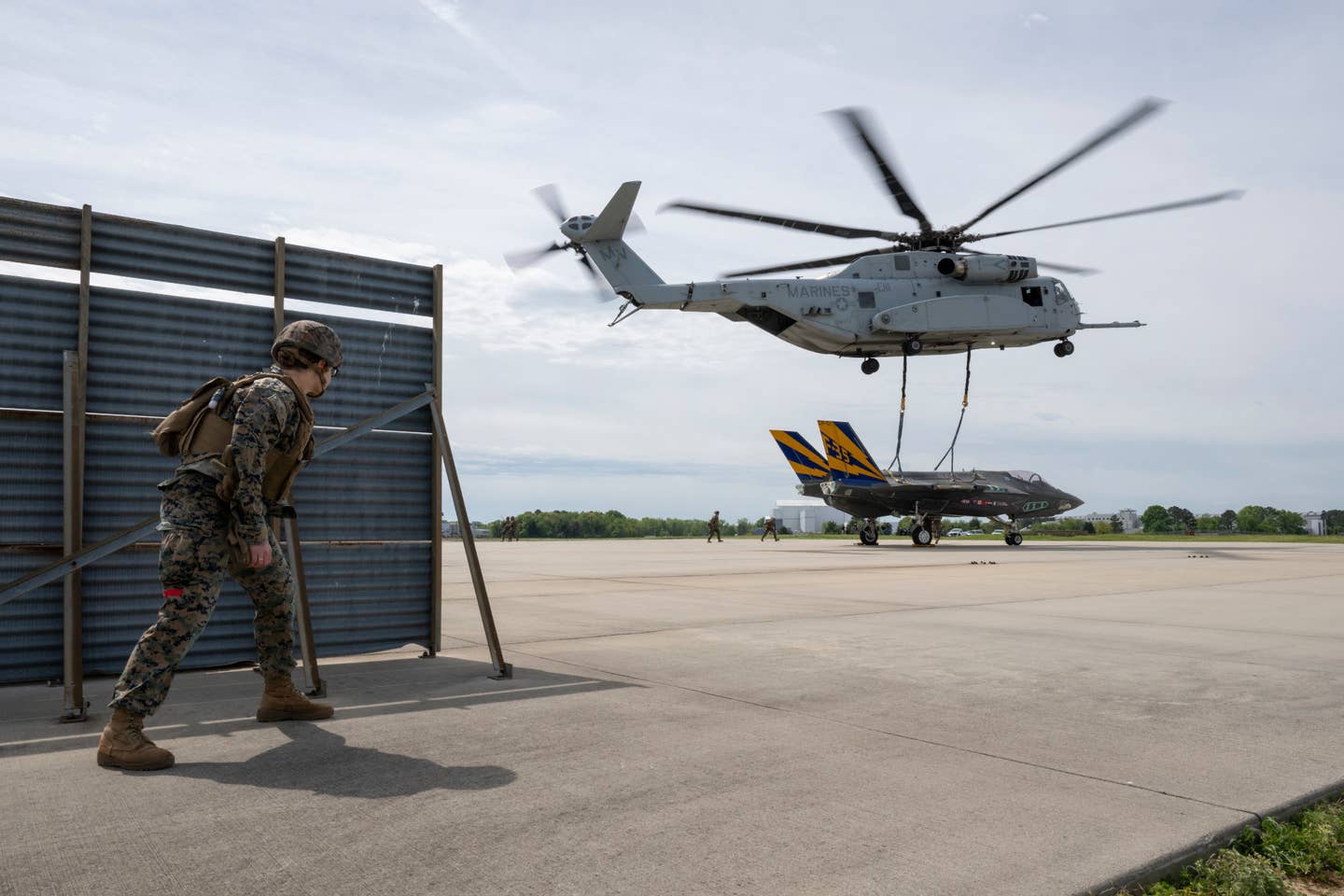
USN
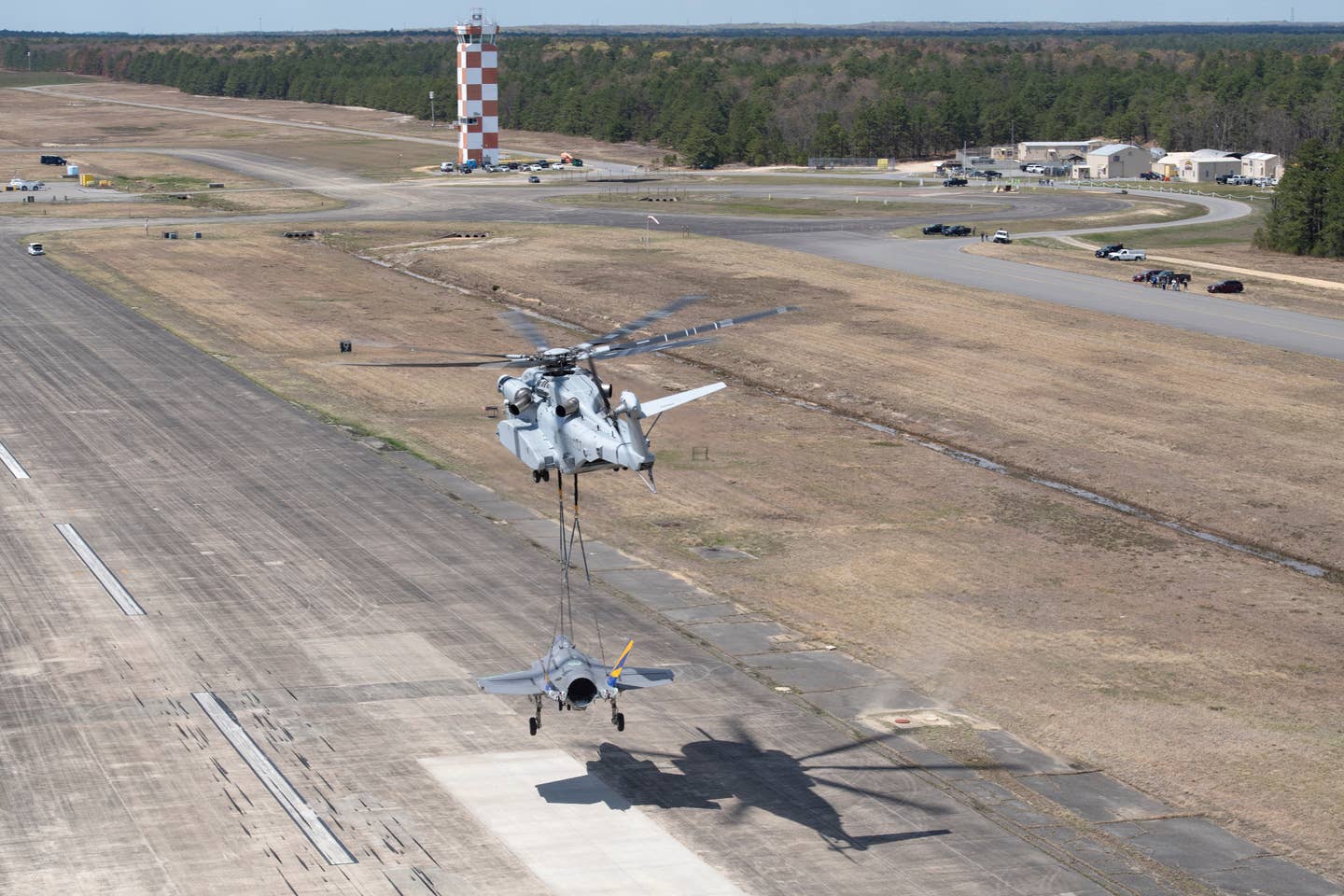
USN

USN
This is actually not the first time a CH-53K has carried this exact airframe slung underneath. The Marines did so as part of a demonstration of the King Stallion's load-carrying capabilities in support of "Helicopter Support Team operations" at Patuxent River in January 2023, as you can read more about here. That looked to be the first time a CH-53K, which has a maximum payload capacity of 36,000 pounds, had ever lifted any F-35 fighter variant, or parts thereof, but did not appear to also involve any mid-air refueling.
Check Out This Marine CH-53K Carrying An F-35C While Refueling From A KC-130T
The new CH-53K is the most powerful helicopter in the Pentagon’s inventory and it provides a critical long-range, heavy-lift capability.BYJOSEPH TREVITHICK|PUBLISHED APR 25, 2024 9:36 PM EDT

U.S. Marine Corps CH-53K King Stallion helicopter with a stripped-down hulk of an F-35C slung underneath refueling in mid-air from a KC-130T Hercules tanker/transport aircraft is a window into what the service's distributed aviation operations might look like in the future.
A Marine CH-53K with a pilot from Marine Test and Evaluation Squadron 1 (VMX-1) at the controls recently did all of this while helping move the remains of the first F-35C test jet, also known as CF-1, from one base to another on April 24. The King Stallion carried the "inoperable airframe, which was without mission and propulsion systems, outer wings, or additional equipment" from Naval Air Station Patuxent River in Maryland to Naval Air Warfare Center Aircraft Division (NAWCAD) Lakehurst some 160 miles to the northeast, according to a caption accompanying the picture seen at the top of this story, which was released yesterday. NAWCAD Lakehurst is situated within Joint Base McGuire-Dix-Lakehurst. What's left of CF-1 will be used for "future emergency recovery systems testing" at its new home in New Jersey, the Navy says.
Additional pictures the Navy has released showing the movement of CF-1 from Patuxent River to Lakehurst are seen below.

USN

USN

USN
This is actually not the first time a CH-53K has carried this exact airframe slung underneath. The Marines did so as part of a demonstration of the King Stallion's load-carrying capabilities in support of "Helicopter Support Team operations" at Patuxent River in January 2023, as you can read more about here. That looked to be the first time a CH-53K, which has a maximum payload capacity of 36,000 pounds, had ever lifted any F-35 fighter variant, or parts thereof, but did not appear to also involve any mid-air refueling.
Dejan Corovic
As above, so bellow
Check Out This Marine CH-53K Carrying An F-35C While Refueling From A KC-130T
Check Out This Marine CH-53K Carrying An F-35C While Refueling From A KC-130T
The new CH-53K is the most powerful helicopter in the Pentagon’s inventory and it provides a critical long-range, heavy-lift capability.
BYJOSEPH TREVITHICK|PUBLISHED APR 25, 2024 9:36 PM EDT

U.S. Marine Corps CH-53K King Stallion helicopter with a stripped-down hulk of an F-35C slung underneath refueling in mid-air from a KC-130T Hercules tanker/transport aircraft is a window into what the service's distributed aviation operations might look like in the future.
A Marine CH-53K with a pilot from Marine Test and Evaluation Squadron 1 (VMX-1) at the controls recently did all of this while helping move the remains of the first F-35C test jet, also known as CF-1, from one base to another on April 24. The King Stallion carried the "inoperable airframe, which was without mission and propulsion systems, outer wings, or additional equipment" from Naval Air Station Patuxent River in Maryland to Naval Air Warfare Center Aircraft Division (NAWCAD) Lakehurst some 160 miles to the northeast, according to a caption accompanying the picture seen at the top of this story, which was released yesterday. NAWCAD Lakehurst is situated within Joint Base McGuire-Dix-Lakehurst. What's left of CF-1 will be used for "future emergency recovery systems testing" at its new home in New Jersey, the Navy says.
Additional pictures the Navy has released showing the movement of CF-1 from Patuxent River to Lakehurst are seen below.

USN

USN

USN
This is actually not the first time a CH-53K has carried this exact airframe slung underneath. The Marines did so as part of a demonstration of the King Stallion's load-carrying capabilities in support of "Helicopter Support Team operations" at Patuxent River in January 2023, as you can read more about here. That looked to be the first time a CH-53K, which has a maximum payload capacity of 36,000 pounds, had ever lifted any F-35 fighter variant, or parts thereof, but did not appear to also involve any mid-air refueling.
It seems that that F-35 is missing it's jet engine, which would be the heaviest part.
Dejan Corovic
As above, so bellow
It appears that US Military will be adopting new rifle and new 0.227 calibre. Essentially, its a big rifle, for big cartridge, with a small bullet. So bullet flies extremely flat, and its easy to shoot with just 1 mil drop out to 600 - 700 yards, Obviously made for war in Europe or China, which is full of open spaces.
View: https://youtu.be/tTAfS1addXU
View: https://youtu.be/tTAfS1addXU
pigfarmer
tall, thin, irritable
Hexagonal bullets, early sniper rifle. Maybe the first.
This Old Gun: Whitworth Rifle
GARRY JAMES
posted on December 8, 2015
NEWS, I HAVE THIS OLD GUN, REVIEWS, RIFLES, HISTORICAL RIFLES

Ask the average Civil War buff to name a Yankee or Confederate sharpshooter’s rifle and invariably the answer is “the Whitworth.” To be fair, the Whitworth probably wasn’t the most widely used long-range rifle during the War Between the States, but it was certainly one of the best and most sought-after by combatants on both sides.
 Designed by eminent English engineer Joseph Whitworth in response to a British Board of Ordnance desire for a universal rifle with which to equip its troops, his unique, smallbore (.451), hexagonal-bored longarm, with a pitch of one turn in 20", fired a proprietary 530-gr., six-sided projectile that fit mechanically within the grooves.
Designed by eminent English engineer Joseph Whitworth in response to a British Board of Ordnance desire for a universal rifle with which to equip its troops, his unique, smallbore (.451), hexagonal-bored longarm, with a pitch of one turn in 20", fired a proprietary 530-gr., six-sided projectile that fit mechanically within the grooves.
Several thousand were built for trials as early as 1858. Pitted against the issue .577 Pattern 1853 Enfield, the Whitworth showed promise, and different styles were ultimately tried. The gun performed extremely well accuracy-wise, especially at longer ranges. Within 500 yds. the Enfield and Whitworth were considered equals—past that range, the Whitworth excelled. But extreme bore fouling by blackpowder residue, the expense of building the guns and the increasing popularity of breechloaders eliminated the possibility of government contracts.
Meanwhile, Whitworth rifles had been eagerly accepted by target shooters, and a number of different models were produced by Whitworth’s firm. The guns employed a variety of open sights, as well as sophisticated telescopic sights developed by David Davidson.
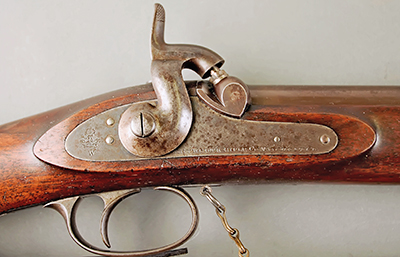 It didn’t take long to discover that conical bullets fired in Whitworths, because of setback, provided accuracy as good as hexagonal rounds, and subsequently the two types were used interchangeably.
It didn’t take long to discover that conical bullets fired in Whitworths, because of setback, provided accuracy as good as hexagonal rounds, and subsequently the two types were used interchangeably.
Whitworth’s rifle received a considerable boost when, in 1860, Queen Victoria opened the new Wimbledon target ranges by pulling a silk cord attached to the trigger of a pre-sighted and machine-rested Whitworth rifle, hitting an iron target just off-center at 400 yds. Most shooters agreed that, because of its accuracy, the Whitworth had an effective range of between 800 and 1,000 yds.—a long shot indeed by the standards of the day.
Whitworths were prized sharpshooter arms during the Civil War, some numbers of them being run through the blockade by the rebels and selectively issued. The most common Confederate guns were marked “2nd QUALITY.” This did not mean they were inferior to other Whitworths, but that they had simpler sights, were less complex and employed Enfield-pattern locks without external slide-on safeties. They featured 33" barrels and checkered fore-ends and wrists. Other styles with Davidson scopes were also occasionally seen in the southern ranks.
 Probably the most famous Whitworth shot occurred during the Battle of Spotsylvania Court House on May 9, 1864, when Union Maj. Gen. John Sedgwick and his staff became the targets of Confederate sharpshooters at a distance later estimated to be between 500 and 1,000 yds. After admonishing his subordinates for ducking—“I’m ashamed of you dodging that way. They couldn’t hit an elephant at this distance”—a Whitworth bullet struck him in the head, just below his left eye. He was the most senior Union officer killed during the war.
Probably the most famous Whitworth shot occurred during the Battle of Spotsylvania Court House on May 9, 1864, when Union Maj. Gen. John Sedgwick and his staff became the targets of Confederate sharpshooters at a distance later estimated to be between 500 and 1,000 yds. After admonishing his subordinates for ducking—“I’m ashamed of you dodging that way. They couldn’t hit an elephant at this distance”—a Whitworth bullet struck him in the head, just below his left eye. He was the most senior Union officer killed during the war.
The rifle shown here is a superb-condition, military-style, target model with two bands and a 33" barrel. The rear sight is a ladder-style graduated to 1,200 yds., and the front is a very sophisticated, adjustable-style post-and-globe. Possessed of a pristine bore, it also has a scraper ramrod with swiveling head to help clear fouling between shots. Because of its condition, style and features, the gun is worth $6,500.
Gun: Whitworth Military Target Rifle
Manufacturer: Whitworth Rifle Co., Manchester, England
Condition: NRA Excellent (Antique Gun Standards)
Manufactured: 1863
Value: $6,500
This Old Gun: Whitworth Rifle
This Old Gun: Whitworth Rifle
byGARRY JAMES
posted on December 8, 2015
NEWS, I HAVE THIS OLD GUN, REVIEWS, RIFLES, HISTORICAL RIFLES

Ask the average Civil War buff to name a Yankee or Confederate sharpshooter’s rifle and invariably the answer is “the Whitworth.” To be fair, the Whitworth probably wasn’t the most widely used long-range rifle during the War Between the States, but it was certainly one of the best and most sought-after by combatants on both sides.

Several thousand were built for trials as early as 1858. Pitted against the issue .577 Pattern 1853 Enfield, the Whitworth showed promise, and different styles were ultimately tried. The gun performed extremely well accuracy-wise, especially at longer ranges. Within 500 yds. the Enfield and Whitworth were considered equals—past that range, the Whitworth excelled. But extreme bore fouling by blackpowder residue, the expense of building the guns and the increasing popularity of breechloaders eliminated the possibility of government contracts.
Meanwhile, Whitworth rifles had been eagerly accepted by target shooters, and a number of different models were produced by Whitworth’s firm. The guns employed a variety of open sights, as well as sophisticated telescopic sights developed by David Davidson.

Whitworth’s rifle received a considerable boost when, in 1860, Queen Victoria opened the new Wimbledon target ranges by pulling a silk cord attached to the trigger of a pre-sighted and machine-rested Whitworth rifle, hitting an iron target just off-center at 400 yds. Most shooters agreed that, because of its accuracy, the Whitworth had an effective range of between 800 and 1,000 yds.—a long shot indeed by the standards of the day.
Whitworths were prized sharpshooter arms during the Civil War, some numbers of them being run through the blockade by the rebels and selectively issued. The most common Confederate guns were marked “2nd QUALITY.” This did not mean they were inferior to other Whitworths, but that they had simpler sights, were less complex and employed Enfield-pattern locks without external slide-on safeties. They featured 33" barrels and checkered fore-ends and wrists. Other styles with Davidson scopes were also occasionally seen in the southern ranks.

The rifle shown here is a superb-condition, military-style, target model with two bands and a 33" barrel. The rear sight is a ladder-style graduated to 1,200 yds., and the front is a very sophisticated, adjustable-style post-and-globe. Possessed of a pristine bore, it also has a scraper ramrod with swiveling head to help clear fouling between shots. Because of its condition, style and features, the gun is worth $6,500.
Gun: Whitworth Military Target Rifle
Manufacturer: Whitworth Rifle Co., Manchester, England
Condition: NRA Excellent (Antique Gun Standards)
Manufactured: 1863
Value: $6,500

